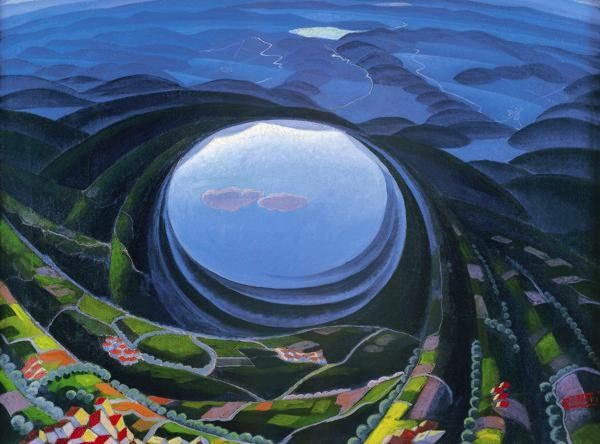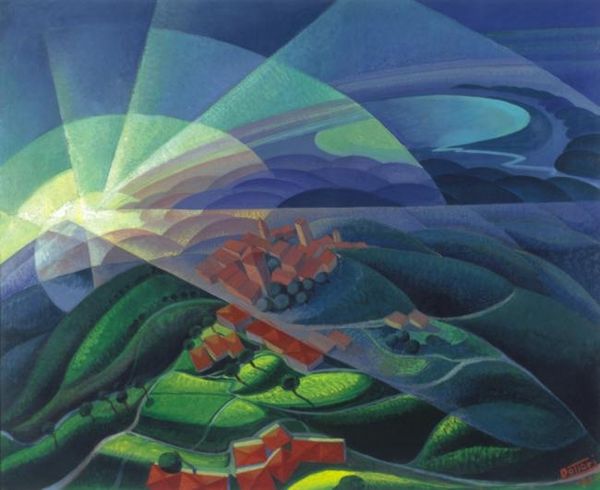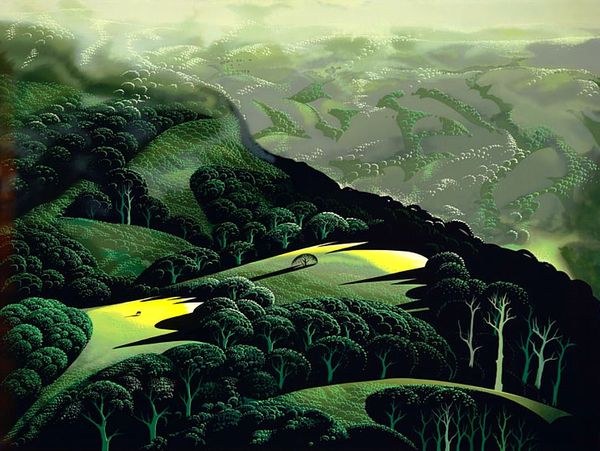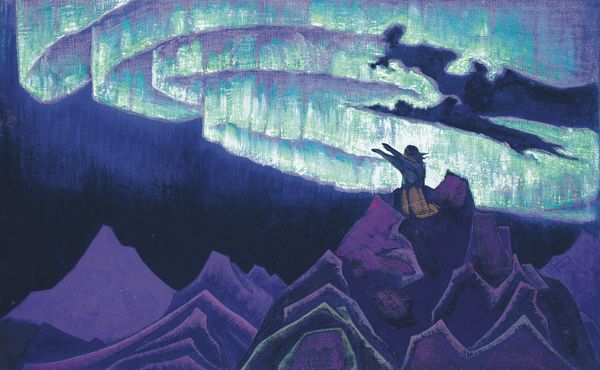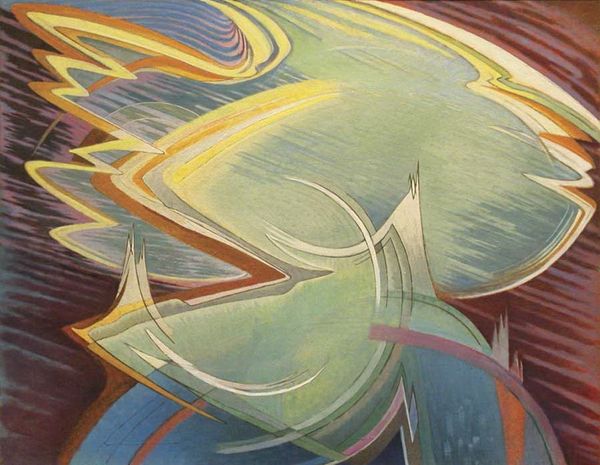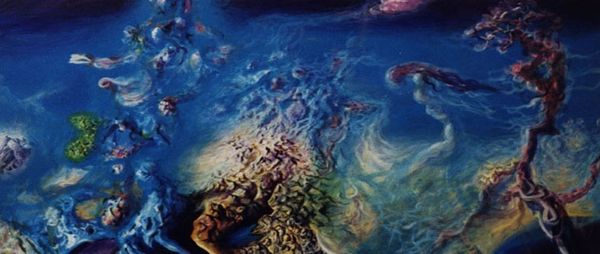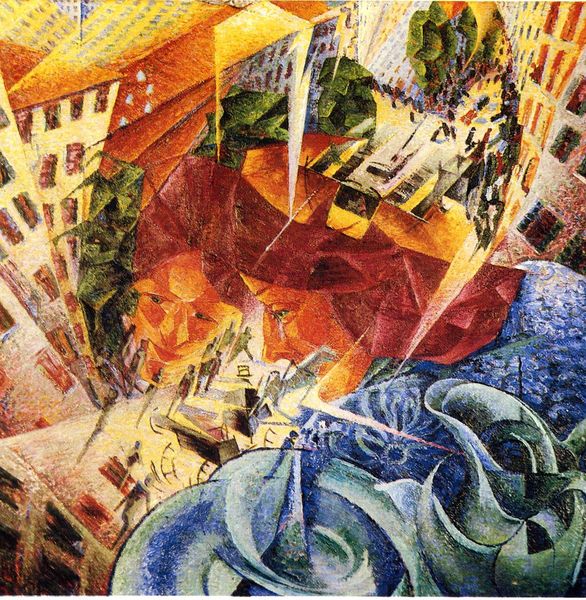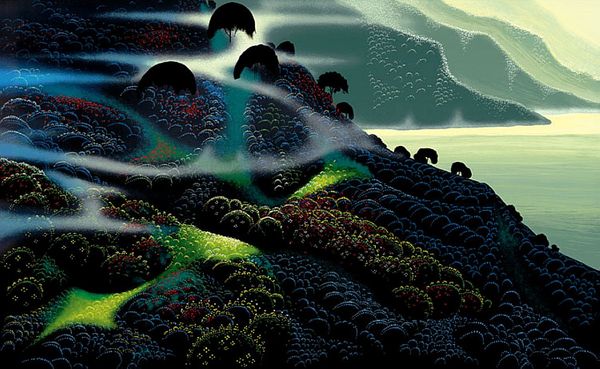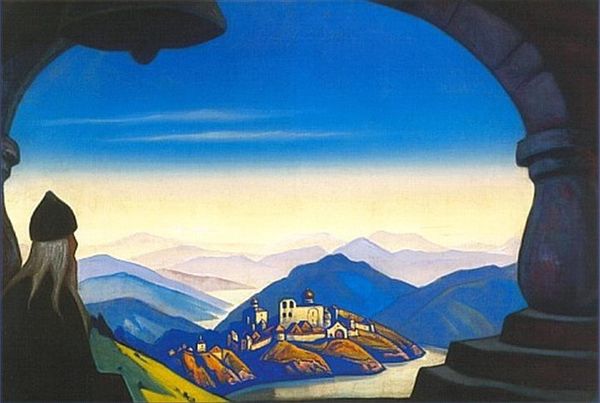
Copyright: Gerardo Dottori,Fair Use
Editor: We’re looking at Gerardo Dottori's "The Miracle of Light While Flying," a tempera painting from 1931. The overall impression is quite dreamlike. There's this rainbow arcing over a stylized town, almost like it's being blessed. What formal qualities stand out to you? Curator: The composition strikes me as a compelling exercise in dynamism. Dottori’s futurist ideology is palpable, notably within his use of lines of force and the geometrical rendering of organic and inorganic subjects. These pictorial strategies were a means of implying motion in a two-dimensional format, no? Editor: Absolutely! I see how the geometric shapes, like those repeating houses, create a sense of rhythm and movement across the landscape. Do you think the limited palette also plays a role? Curator: Indeed. The judicious usage of tempera provides a unique color intensity, while also supporting formal harmony across the entire plane of the painting. Also consider Dottori's unique use of lines, which may provide an innovative approach for structuring forms and illustrating volume in this scene, giving the painting a very graphic and precise characteristic, don't you think? Editor: I see that now! The colors aren't just pretty; they're building the scene's structure. Thanks, seeing those forms creates a sense of being suspended above this landscape! Curator: It’s fascinating how analyzing these elements—line, form, color—unlocks a deeper appreciation. The futurists really embraced capturing the speed and dynamism of the modern world, and the techniques on display really deliver on the ideology. Editor: Totally! By viewing and studying the painting in the frame of futurist strategies and composition it unlocks new angles of visual interpretation.
Comments
No comments
Be the first to comment and join the conversation on the ultimate creative platform.
